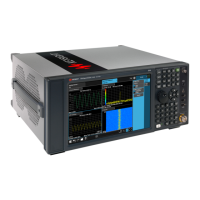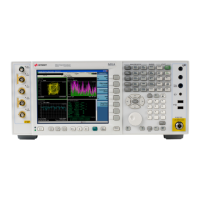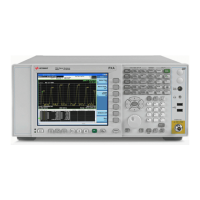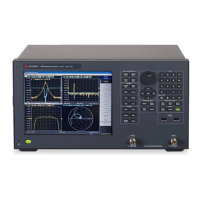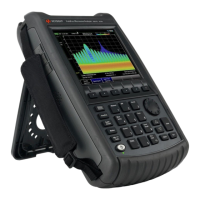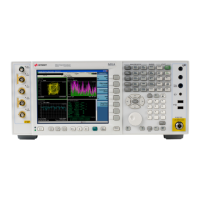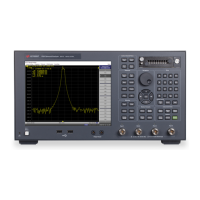Features and Functions 3
Keysight 34420A User’s Guide 77
Overload Detection
The 34420A uses both an analog and digital method to generate an overload
condition and display the OVLD message. An understanding of the cause of the
overload can help you make more accurate measurements.
Digital Overload Detection
The digital overload detect occurs when the magnitude of the measurement is
greater than 120% of the Range. For example, on the 1 volt Range, signal levels of
greater than ± 1.2 volts will cause an OVLD in the display.
Analog Overload Detection
Another type of overload can result in measurement errors that are hard to
identify. For example if an overload signal only occurs for a portion of the
measurement period, the input amplifier could become non-linear resulting in an
inaccurate reading. The displayed result may appear to be correct because the
overload signal only occurred during a small portion of the measurement cycle.
The 34420A detects this problem by providing comparators on the input amplifier.
If signals large enough to overload the input amplifier are detected, the display
will read OVLD. The comparators detect signals greater than 140% of the range
setting.
If an overload occurs, two solutions are possible.
– Setting the meter to the next higher range will provide 10 times improvement
in the overload signal handling capability. For example,if you are measuring on
the 1 mV range and have 2 mV rms of power line (50 or 60 Hz) pickup, the
noise overload comparators would sense the peaks of the signals and an OVLD
message would be displayed. If you set the range to 10 mV, the resolution
(with 7 digits) is still 1 nanovolt, and the reading rate is faster than if ANALOG
FILTER had been turned on. Additionally, the 10 mV range noise is almost as
low as the 1 mV range.
– Alternately, if using the 1 mV, 10 mV, or 100 mV ranges, turn on the ANALOG
FILTER. The reading rate slows down with the filter on. In the case of a larger
overloads (for example, 20 mV rms noise on the 1 mV range) using the
ANALOG FILTER would give a lower noise result than changing to the 100 mV
range.

